Screens have become a common part of our everyday life. From train stations, to bus stops, to shopping centers; we’re now used to seeing them everywhere we go. Generally, there are three main uses for these screens. The first is to advertise, the second is to entertain, and the third is to educate. Screens can be used to educate us in many different ways. Simply imparting information such as film times or waiting times is one example of this, but often screens seek to do more than just that. More and more, screens are being used for digital signage in education environments, to make sure that students are still learning, even when their teachers aren’t on hand.
Why are screens needed for digital signage in education?
If you’ve ever worked in education, you’ll know just how much information needs to be shared on a daily basis. Whether a nursery school, primary, secondary, college or even university, administrators working in this sort of environment need to be able to get information out quickly and effectively.
Digital screens are the ideal way to do this. Sharing information in this way is cheaper than using the postal service, and less time consuming than doing it via email. When there’s new information that needs to be shared, such as exam dates or timetable changes, the information can be added to the screens very quickly, using easy to use software on a central computer.
Extra-curricular activities can also benefit greatly from digital signage. This is especially true of sports. Team sports and athletics can be vastly improved with the provision of screens to display lap times and scores. This kind of technology can be particularly beneficial during school sports events, as they can help the spectators to feel much more a part of the action.
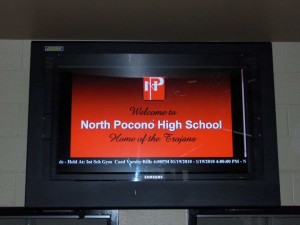
In addition to sharing information, screens can also be used to support learning activities. They can be particularly valuable when used within practical subjects, such as science and design and technology. It’s much easier for teachers and support staff to explain complicated concepts and techniques to their students when they have a screen to display visual aids.
Why an LCD enclosure is needed
However, if you’re looking to install screens for digital signage in educational environment, you’re probably already aware of the challenges this presents. Any piece of technology that is going to be used in a school, college or university needs to be very hard-wearing. Not only will it be passed by and used by a large group of students, it also may be positioned in a place that could be damaging to technology. This could be out in a playground or sports field, or within a lab or canteen environment.
If a school is going to invest in a piece of technology, they need to be confident that the investment is worthwhile. This will only be the case if the technology lasts to be used year after year. This is where Armagard come in. We offer a range of LCD, industrial and stainless enclosures that are extremely hard-wearing without impacting on usability. These can be installed at the same time as a screen, and will ensure that it is safe from the elements, as well as the students. A school or university that was to invest in one of these enclosures could rest assured that it would protect their technology year after year, ensuring that they got an excellent return on their investment.
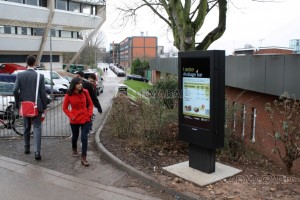
Enclosures protect screens and computers in a large variety of way. They keep them safe from the weather, from dust and other particles and from collisions and accidental bumps. A screen that is installed securely with an enclosure is also protected from theft or criminal damage.
Another reason many schools, colleges and universities invest in enclosures is because they keep their data safe. Data loss is responsible for a of a great deal of wasted time, and an enclosure that can protect against it is a very valuable tool.
Where should a screen be positioned?
Screens designed to impart information tend to work particularly well in educational environments because they have many areas within them where people congregate. Whether these areas are indoors or outdoors, Armagard enclosures mean screens can be positioned wherever they will be most useful. This makes the use of the screens themselves more valuable, as it means they can be used wherever they would be most useful.
In addition to classrooms and lecture halls, a school is likely to want to install screens in an area where they’ll be able to most effectively share information with students. In a nursery or primary school, the most valuable position tends to be where parents gather. Often, this is the school reception and the playground, where parents wait at the beginning and end of the day. An LCD enclosure means that a screen can be positioned in the playground very easily, where it can do a very effective job of keeping parents up to date with the school’s news.
At secondary schools, colleges and universities, there are lots of great options for places to position screens. Corridors that receive high student traffic can be very good choices, as can canteens, common areas and departmental receptions.
Of course, wherever screens are installed within an educational environment, it’s important that they are protected to stand up to the various threats they’ll be subjected to. Outside screens will need to be protected from wind, rain, frost, direct sunlight and theft, while screens positioned in areas that serve food and drink will need to be resistant to spills and hygiene considerations.
Even screens that are installed in educational areas away from these obvious threats will need to be hard-wearing enough to stand up to the high level student traffic that passes every day. Bumps, scrapes and sticky fingertips can be damaging to screens, but an LCD enclosure can keep them protected.
Choosing an enclosure
Our range of enclosures are all easy to set up. They’re also all designed to allow easy replacement of the screens within them. This means that you have the freedom to upgrade your technology without having to worry about upgrading its protection too.
When you are choosing an enclosure, it’s important to consider where it’s going to be positioned. If it’s going to be outside, that means it will need to be waterproof and weatherproof. If it’s going to be in a design and technology classroom or workshop, it’s going to need to be dust proof. If it’s going to be placed in a canteen, it will be very important that it is washable. These needs and requirements will help you find the enclosure that is most appropriate to you.
An LCD enclosure is the ideal choice for using digital signage in educational environments. These enclosures ensure that the screens sealed within them are protected from collisions, particle ingress and heavy rainfall. They’re really easy to use, and are a cost-efficient alternative to buying a dedicated outdoor display. Simply put: an LCD enclosure will make any screen weather safe.
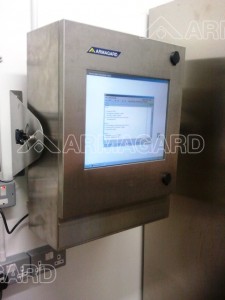
Industrial and stainless enclosures offer all of these benefits and more. They are generally used in more specialized environments, such as manufacturing plants and laboratories. They can be very valuable within educational environments with more specific needs: such as college and university science departments.
Real examples
If you’re thinking of investing in an enclosure to enhance communications within your school, college or university, you may be interested to read about some real examples of organisations that have done the same.
College Braque in Dieppe, Northern France, purchased a waterproof touch screen enclosure to use within a covered area of their playground. This meant that while the students were enjoying free time out of the school building, they could still engage and interact with material provided by the college by using the screens. There were no worries about the screen being damaged by wet weather, and the enclosures also protected the screen from theft. Finally, by investing in a touch screen enclosure, the college made sure that the usability of the screen wasn’t impacted on by installing an enclosure.
Fachhochschule Westküste in Germany ordered two LCD enclosures to use within classrooms. The school wanted to make sure that their screens would be well protected within the environment, and that they wouldn’t be at risk of being damaged by being knocked by a student. In doing this, the school increased the lifespan of their technology significantly.
Coventry Primary School in the west midlands purchased two LCD enclosures to protect screens that were being used to give notices to parents. The enclosures they chose meant that the screens would be protected whether they chose to position them indoors or out – giving the primary school and effective and long lasting way of communicating with the parents of their students.



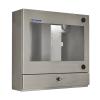
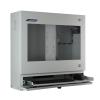
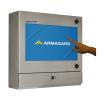
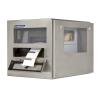
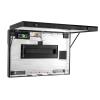
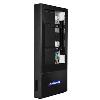
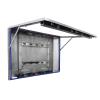
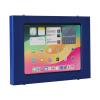
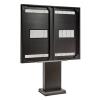
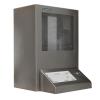






Comments are closed.